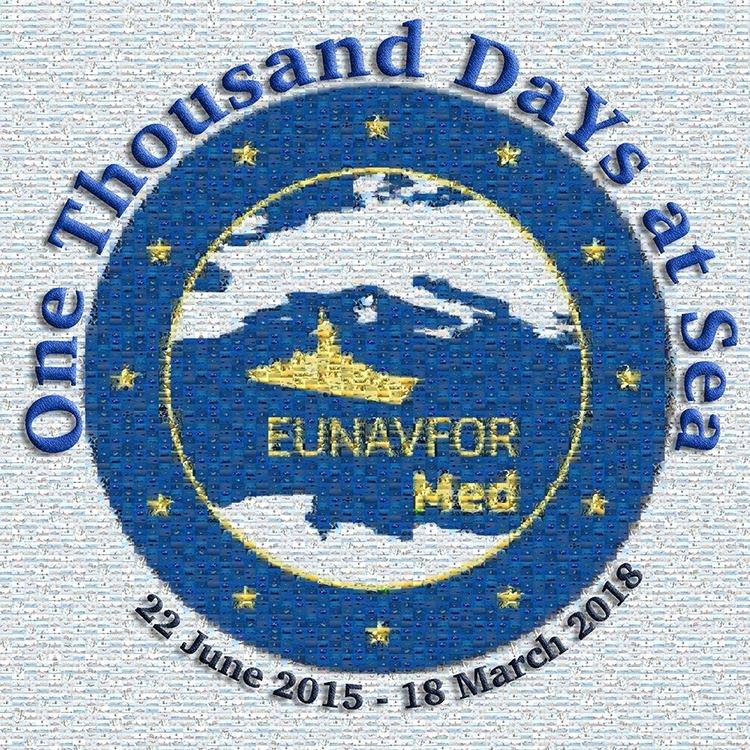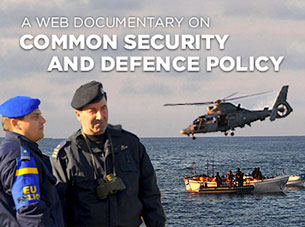For a European security or crisis management fund?
(BRUSSELS2, opinion) Budgetary difficulties, capability shortfalls, funding problems will not end tomorrow as if by a miracle. In Europe, we will have to get used to having European defense budgets at an annual rate of around 1% of GDP rather than around 2% (as is the target set by NATO). This will require changes in attitude and the establishment of new instruments. You have to innovate. For example, why not consider setting up a European fund for security (ESF) and defense (FESED) or for crisis management (FEGEC). The objective would thus be to have a permanent financing facility for emergency military operations, battlegroups, capability gaps, etc.
Precedents?
Innovating does not necessarily mean creating from scratch. Some mechanisms already exist and the new instrument could be inspired by them, at least for resources. The European Development Fund (EDF) is outside the Community budget and fed by a distribution key for the Member States, defined at a European summit. The budget is defined for 5 years, 22,7 billion euros for the period 2008-2013. It is the main instrument for cooperation and development policy. The European Globalization Fund (EGF), which is inserted into the Community budget from unused funds within a maximum limit of 1/2 billion euros per year, to finance actions within the framework of social plans caused by the globalization. In terms of organisation, there is already a resource management mechanism for military operations, the Athena mechanism, which finances the common costs of the 4 ongoing military operations (approximately 45 million euros for 2013).
Where would the resources come from?
This new instrument could be placed outside the Community budget. In this, the EDF model is interesting. Its multi-annual programming is also interesting. But we could add a contained dimension of the GEF, which consists of using unspent resources. The distribution key could be the one used for the Athena mechanism (or even the one used by the Development Fund). It can also be considered that there could be a contribution from the Community budget, for example, from the budget for preparatory actions.
Who would participate in this Fund?
To circumvent a possible veto (follow my gaze... :-), it may be necessary to resolve to volunteer. This can be by adopting a flexible mechanism of ad hoc cooperation, enhanced cooperation, or even the system of permanent structured cooperation. Device which has the advantage of being already provided for in the Treaty of Lisbon and allows decisions by qualified majority, once the creation has taken place. The principle of In or Out (as for the European Stability Mechanism): whoever does not finance cannot benefit from it...
The participation of the countries of Weimar+, Benelux, the countries of Eastern Europe and the Nordic countries could provide the necessary surface. The participation of the United Kingdom could further complicate the deal and be excluded. That of neutral countries deserves internal introspection but it seems desirable; because most of these countries make interesting contributions to the CFSP. It could also be useful to involve candidate countries or countries in the process of applying (Albania, Serbia, etc.) because they are likely to participate more in PeSDC missions. The implementation could be gradual: to 8-10 countries at the start, before expanding.
How would the expenses be decided?
Decision-making should not be one state, one vote. This would have a destructive effect with a spending effect of countries that contribute very little at the expense of the largest contributors. Between the unanimous voting mechanism which submits each expenditure to the goodwill of a State and the qualified majority which could make it possible to override the will of a non-negligible minority, there is a whole range of solutions to reconcile the speed of decisions and respect for sovereignties, efficiency and responsibility.
A principle could be to have a distinct approach according to the amounts committed: for certain amounts (less than one million euros or less than 500.000 euros), the majority could simply be qualified; being overqualified for larger amounts; even unanimity for certain decisions. A State should have the ability to "exit" a decision (à la carte vote) if it considers that the commitment in a region or for a specific action does not meet some of its constitutional commitments or national security imperatives. (eg for neutral countries).
What would this fund finance?
We can think that this fund would make it possible to finance:
- Some common capabilities in missions - command, communications... - much like the Athena mechanism does today.
- Recurring deficiencies in operations - such as medical support, force protection.
- Part of the training or projection capabilities (transport, etc.) of the battlegroups. We know that during operations, the financial barrier prevents countries that have capabilities from offering them because they don't have a penny for sending soldiers, for example.
- The development of certain industrial-operational projects developed by the European Defense Agency (such as the anti-IED lab for improvised explosive devices, for example, or the field hospital). This would be a serious incentive for countries to support these projects.
- Emergency needs. The list of fundable actions should be flexible enough to adapt to new circumstances or threats. We could therefore urgently need drones or cyber combat capabilities on a European mission. And then you have to go very quickly.
- Finally, it is not forbidden to think that this fund could also finance the dispatch of military experts or ad hoc planners, prior to a mission, for example to strengthen the European crisis management structures, in temporary...
How much would this fund be endowed with?
I tested the amount available with several people. By including that this fund would take into account the common budgets, we can consider that an amount between 300 and 500 million euros per year. This represents approximately 0,1 to 0,2% of the Member States' defense budget.
The programming period should not be annual but multi-annual, 3 to 5 years. The 5-year period corresponds to the rotation period of the European institutions. But it seems too long to make necessary readjustments. A period of three years (or 2 x 3 years) may be preferable. This would give a budget of 1 billion to 1,5 billion, on the amount available.
What to do with unused expenses?
The Globalization Fund reuse rule could be used: any budget not used in the year could be carried over to the following year. At the end of the programming period, it could either be donated to the Member States or for certain actions of the European Union (equipment, etc.), or even mixed.



Comments closed.